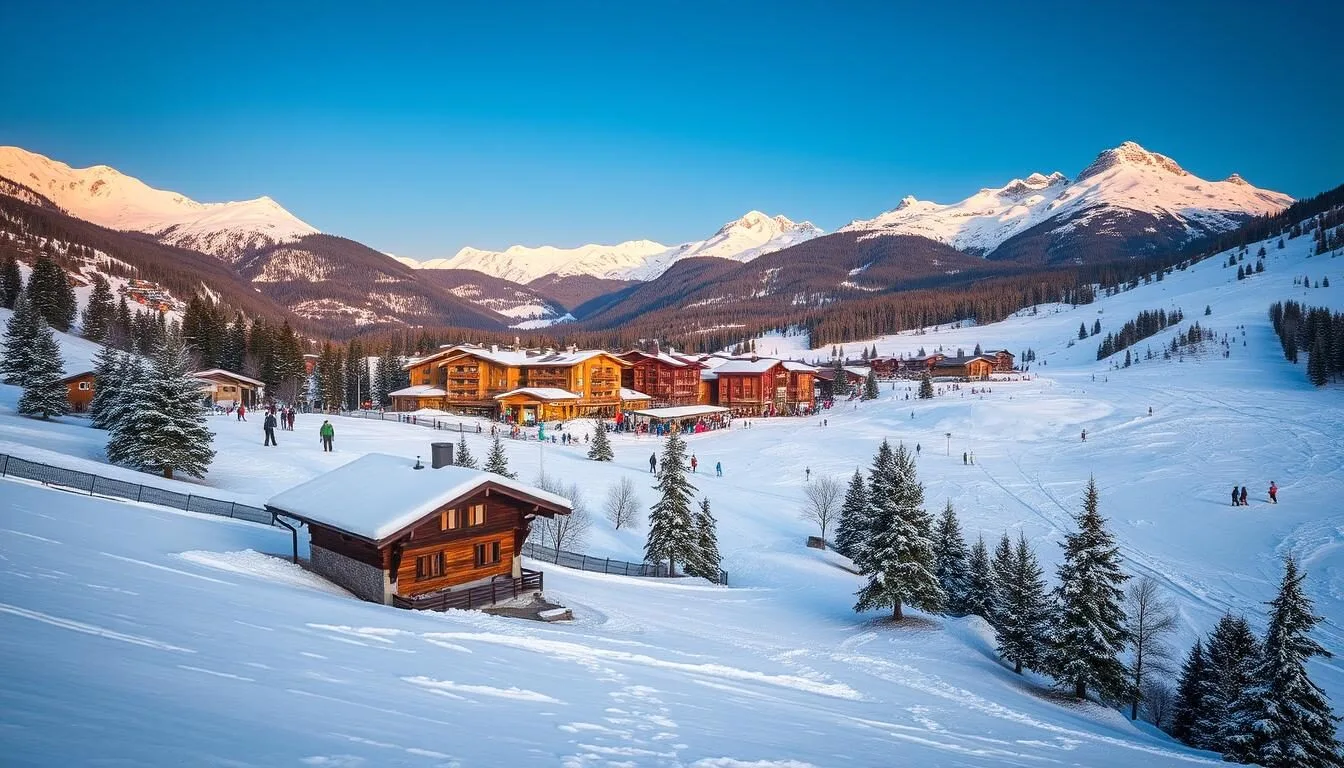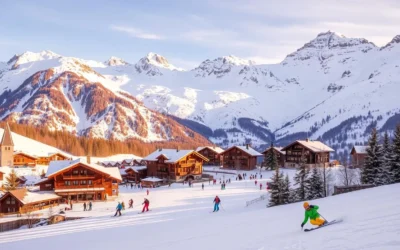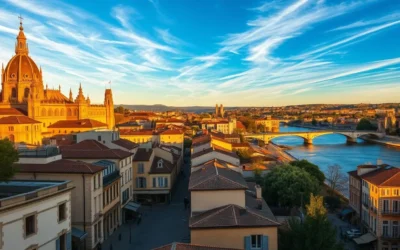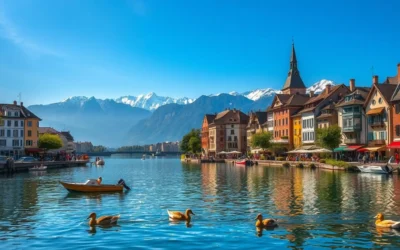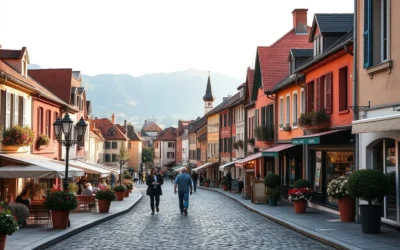Did you know that Val-d’Isère attracts skiers from around the globe with its excellent snow conditions and varied slopes? Located in the French Alps, this picturesque resort offers a unique alpine experience that changes with the seasons.
As you plan your trip, understanding the weather patterns in Val-d’Isère is crucial. The resort experiences a range of temperatures throughout the year, from -2°C in December to 28°C in July. The rainiest months are September, November, and October, which might impact your outdoor activities.
Whether you’re looking to hit the slopes or enjoy sunny days, this guide will help you determine the best time to visit Val-d’Isère. We’ll explore the distinctive weather patterns, temperature ranges, and precipitation levels to ensure you’re prepared for your trip.
Understanding Val-d’Isère’s Seasonal Climate
Understanding the seasonal climate in Val-d’Isère is crucial for planning your trip to this Alpine resort. The town’s climate is characterized by significant variations in temperature throughout the year, influenced by its high altitude and Alpine weather patterns.
Alpine Weather Patterns
Val-d’Isère experiences a typical Alpine climate, with cold winters and warm summers. The region is known for its significant snowfall during the winter months, making it a popular destination for ski enthusiasts. The Alpine weather patterns bring about distinct seasonal changes, with each season offering unique activities and experiences.

Temperature Variations Throughout the Year
The temperature in Val-d’Isère varies greatly from one month to another. In the winter, temperatures can drop as low as -2°C in December and January, while in the summer, they can rise to 28°C in July.
- In winter (December to February), temperatures range from -2°C to 10°C, ideal for skiing.
- During spring (March to May), temperatures gradually warm up, with cool mornings and warmer afternoons.
- Summer months (June to August) offer pleasant daytime temperatures, perfect for hiking and outdoor activities.
- In fall (September to November), temperatures decline, returning to winter-like conditions by November.
By understanding these temperature variations, you can better plan your activities and make the most of your visit to Val-d’Isère, whether you’re there for skiing in the winter or hiking in the summer.
Winter in Val-d’Isère: December to February
Val-d’Isère’s winter season, spanning from December to February, offers a unique blend of snow sports and festive cheer. As you plan your trip, it’s essential to understand what each month brings to the table.
December: Holiday Magic and Early Season Snow
December is a wonderful time to experience Val-d’Isère, with the resort decked out in festive decorations and a lively atmosphere. The snow conditions can be a bit variable, but the pistes are usually well-maintained, making it a great time for families to enjoy the slopes. As the month progresses, the snow cover improves, setting the stage for a fantastic ski season. You can enjoy the holiday magic while taking advantage of early season snow.
![]()
January: Perfect Powder and Fewer Crowds
January is often considered one of the best months to visit Val-d’Isère, with cold temperatures bringing excellent powder snow. The crowds are generally smaller than in February, making it an ideal time for those seeking a more relaxed skiing experience. You can enjoy the serene slopes, and with fewer crowds, you’re likely to have a more peaceful experience on the mountain. The ski lifts are less busy, allowing you to make the most of your day.
February: Peak Season Experience
February is the peak of the winter season in Val-d’Isère, coinciding with French school holidays and attracting families from across Europe. The resort is at its busiest, with optimal snow conditions and longer daylight hours. While this can be an exciting time, with a vibrant atmosphere and plenty of activities, it’s essential to plan ahead. If you’re traveling with children, be aware that Children’s Ski School places are often booked up months in advance. Here are some key points to consider:
- February represents the absolute peak of Val-d’Isère’s winter season.
- The resort operates at maximum capacity, with families and children dominating the slopes.
- Snow conditions are typically at their prime, with a deep base and regular fresh snowfall.
- Families should book accommodations, ski lessons, and childcare well in advance.
If you’re an independent adult skier seeking quieter slopes, you might prefer to avoid February unless you enjoy the energetic family environment.
Spring Skiing: March to April
As winter’s chill begins to fade, Val-d’Isère transforms into a spring skier’s paradise. The months of March and April bring a unique combination of late-season snow conditions and increasingly sunny weather, making it an ideal time to enjoy the slopes.
March: Sunshine and Stable Snow Conditions
In March, Val-d’Isère enjoys sunshine and stable snow conditions, making it a great time for skiing. The snow is typically firm and well-maintained, offering excellent conditions for a variety of skiing styles. As the days get longer, you can enjoy the crisp morning air and the warmth of the sun on your face in the afternoon.
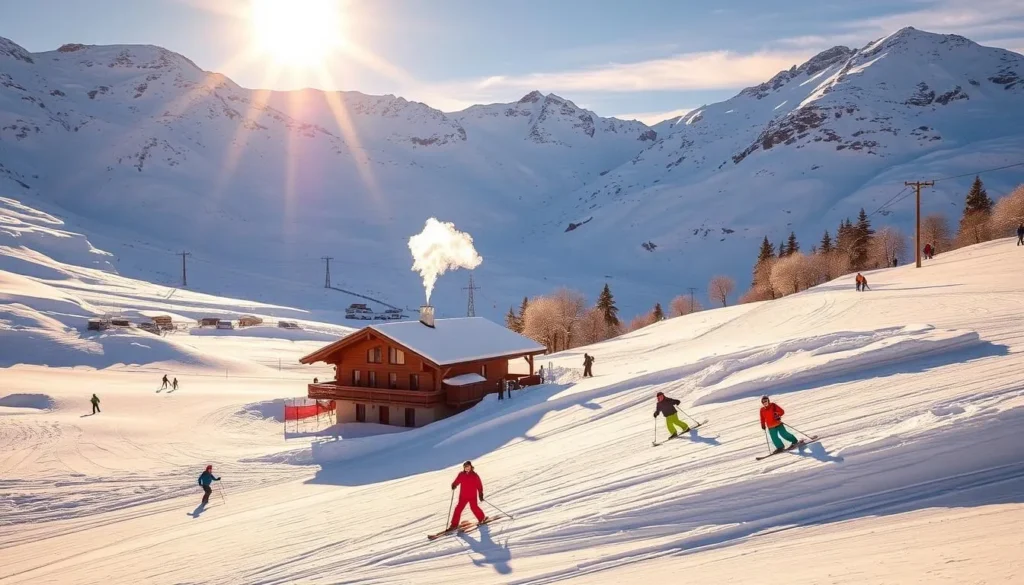
April: Spring Powder and End-of-Season Deals
April is often considered one of the best months for skiing in Val-d’Isère. The month can bring significant snowfall, thanks to spring showers that refresh the mountains. This, combined with the generally quieter pistes and end-of-season deals on accommodations and ski rentals, makes April an attractive time to visit. You can enjoy lazy long lunches in the sun and take advantage of the relaxed atmosphere, with shorter lift lines and a more laid-back vibe.
- The high altitude of Val-d’Isère’s ski area ensures that snow conditions remain reliable through April.
- Spring weather patterns create a daily rhythm, with firm snow in the morning and softening snow in the sunny afternoons.
- The resort atmosphere becomes more relaxed, with fewer crowds and a laid-back atmosphere.
Summer Adventures: May to August
Val-d’Isère’s summer season is a treasure trove of outdoor activities and breathtaking landscapes. As the snow melts, the resort transforms, offering a new array of experiences for visitors.
May-June: Quiet Transition and Hiking Opportunities
The late spring and early summer months bring a serene atmosphere to Val-d’Isère. The snow has melted, revealing lush green landscapes and wildflowers, making it an ideal time for hiking and exploring the mountains. The temperatures are mild, and the trails are less crowded, providing a peaceful hiking experience.
During May and June, you can enjoy the tranquility of the alpine environment, with the sound of cowbells and the scent of wildflowers filling the air. It’s a perfect time to reconnect with nature and enjoy the beauty of the French Alps.
| Activity | May-June | July-August |
|---|---|---|
| Hiking | Moderate trails | High-altitude trails |
| Mountain Biking | Trail opening | Full trail access |
July-August: Peak Summer Activities and Weather
July and August are the peak summer months in Val-d’Isère, transforming the resort into a vibrant summer mountain playground. The warm weather brings the temperatures to a comfortable range, with daytime highs reaching 25-28°C (77-82°F), ideal for outdoor activities.
The lifts operate during this period, providing easy access to high-altitude hiking trails, mountain biking routes, and panoramic viewpoints. Visitors can enjoy a wide range of activities, including paragliding, rock climbing, golf, tennis, and swimming, catering to all interests and abilities.
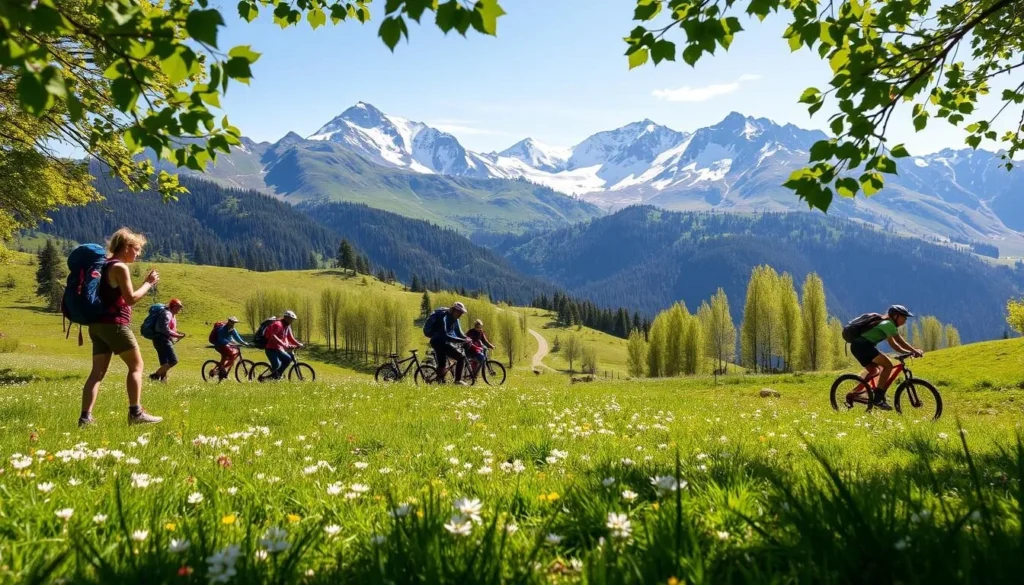
As the summer months peak, the evenings remain refreshingly cool, with temperatures dropping to 13-15°C (55-59°F), making for ideal sleeping conditions. This contrast between the warm days and cool nights is a welcome respite from the hotter lowland areas of France during midsummer.
Fall in the Alps: September to November
As the summer months come to a close, Val-d’Isère transitions into the fall season, offering a unique experience for visitors. The fall season, which spans from September to November, brings distinct characteristics to the resort.
September-October: Mild Weather and Beautiful Landscapes
During September and October, Val-d’Isère enjoys mild weather, making it an ideal time to explore the surrounding landscapes. The temperatures are pleasant, and the scenery is particularly beautiful as the leaves change colors. It’s a great time for hiking and enjoying the outdoors before the winter snow sets in.
You can expect a relatively quiet atmosphere, as the peak summer season has ended, and the winter sports enthusiasts have not yet arrived.
November: Pre-Season Preparation
November marks the beginning of the pre-winter transition period in Val-d’Isère. The resort is quiet, with many businesses closed for annual breaks or renovations. The weather starts to become colder and wetter, with temperatures ranging from 1 to 11 degrees Celsius.
While the lifts are closed, and mountain access is limited to hiking, November offers a unique opportunity to experience the authentic, unhurried rhythm of alpine life. You can witness the transformation from fall to winter landscapes as the first significant snowfalls begin to accumulate at higher elevations.
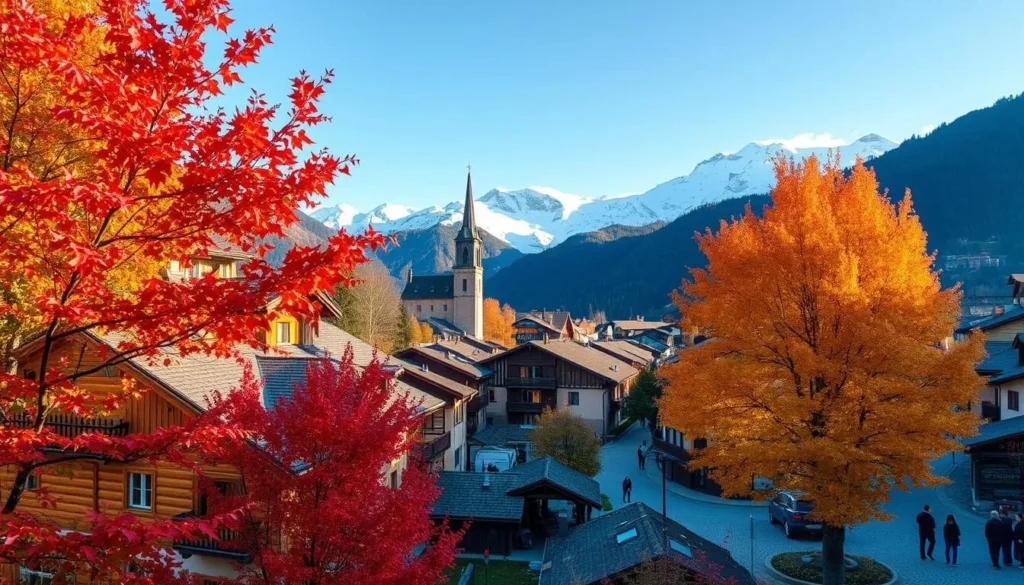
Best Months for Different Types of Travelers
Val-d’Isère’s charm is accessible throughout the year, tailored to different travelers’ interests. Whether you’re looking for the best ski conditions, pleasant weather, or budget-friendly options, there’s a perfect time for you to visit.
For Powder Enthusiasts: Optimal Ski Conditions
For those seeking the best powder, January stands out as a prime month. The snow conditions are typically at their best, with consistent snowfall and well-groomed slopes. You can enjoy the resort’s vast terrain, including the famous Solitude and La Géante runs, without the crowds that come later in the season.
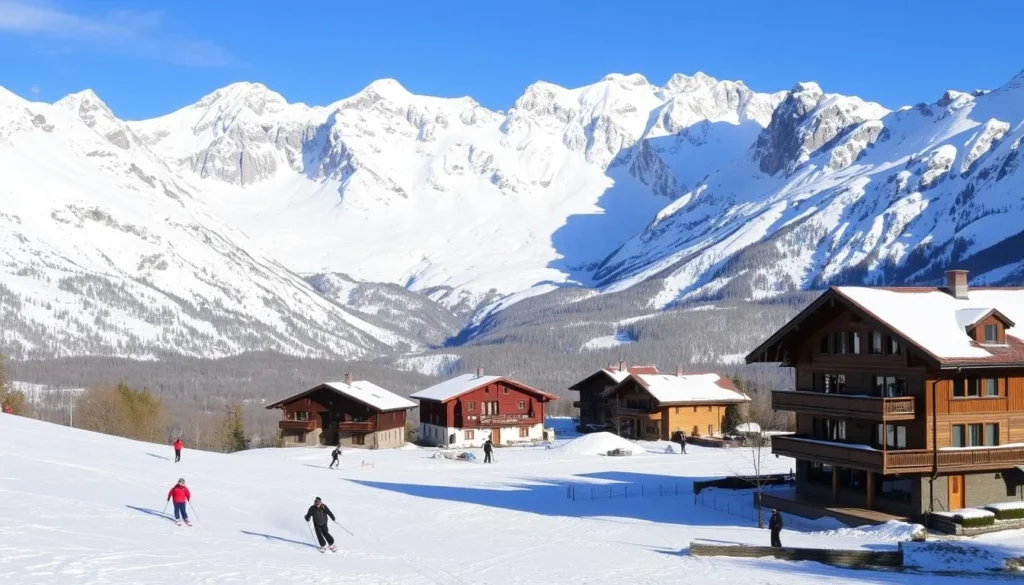
For Fair-Weather Visitors: Sunshine and Comfort
If you prefer milder weather and plenty of sunshine, consider visiting in September or early October. These months offer comfortable temperatures and stunning alpine landscapes, ideal for hiking and exploring the region. The summer crowds have dissipated, making it a more relaxed experience.
For Budget Travelers: Value Seasons
January and April are highlighted as excellent periods for budget-conscious travelers. In January, you can benefit from post-holiday price drops of 30-40% on accommodations and packages. April brings end-of-season deals, with discounts on lift tickets, equipment rentals, and more. Additionally, consider the shoulder seasons for further savings.
- Mid-January for post-holiday discounts
- Late April for end-of-season deals
- Early December and late April/early May for shoulder season savings
Practical Weather Considerations for Your Visit
To make the most of your visit to Val-d’Isère, you need to be prepared for the local weather conditions. Understanding the practical aspects of weather in this Alpine resort can significantly enhance your travel experience.
What to Pack Based on Season
Packing appropriately for your trip to Val-d’Isère is crucial. In the winter, warm clothing, waterproof gear, and good quality snow boots are essential. For summer visits, lightweight clothing, sunscreen, and a hat are recommended. Always check the weather forecast before your trip to ensure you’re prepared for any conditions.
| Season | Essential Items |
|---|---|
| Winter | Warm clothing, waterproof gear, snow boots |
| Summer | Lightweight clothing, sunscreen, hat |
Transportation and Weather-Related Challenges
Getting to Val-d’Isère involves considering the weather and its impact on transportation. The closest airport is Geneva (GVA), about a 2-hour drive away. Renting a 4×4 vehicle can be beneficial due to mountain roads, but it’s crucial to check road conditions before departing. Winter travelers should be prepared for potential delays and consider winter-specific travel insurance.
- Check road conditions before you depart.
- Consider renting a 4×4 vehicle for mountain roads.
- Look into professional airport transfers for a stress-free journey.
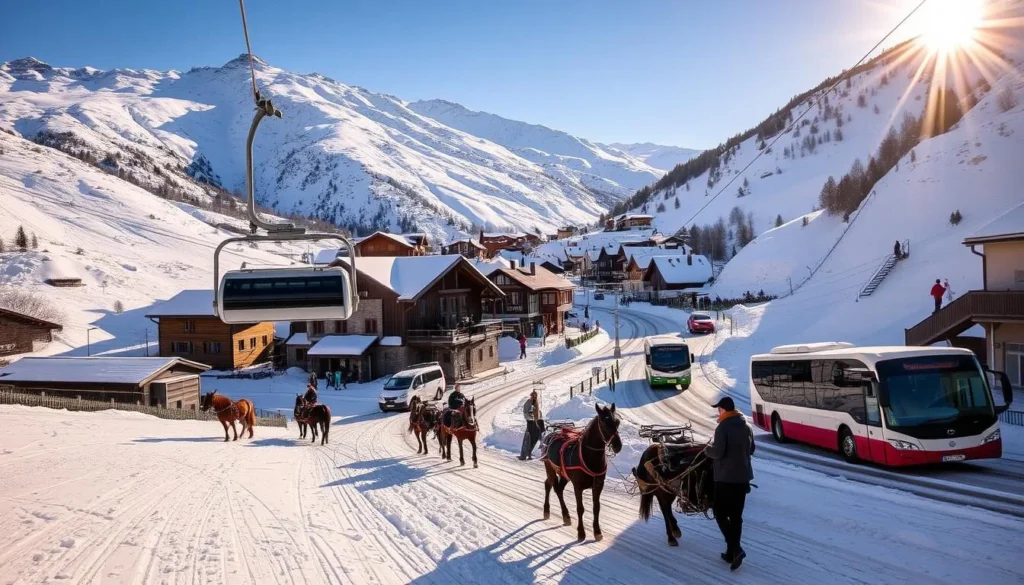
By being aware of these practical considerations, you can better plan your trip to Val-d’Isère and enjoy your time in this beautiful Alpine resort, regardless of the season.
Conclusion: Timing Your Perfect Val-d’Isère Adventure
The perfect time to visit Val-d’Isère hinges on your priorities, whether it’s skiing, hiking, or enjoying the local culture. For ski enthusiasts, January to April offers the best conditions, with January and April being ideal for those seeking fewer crowds and better deals.
If you’re looking for summer adventures, July and August are the peak months for warm-weather activities and operational lifts. Meanwhile, budget-conscious travelers can find value during the “shoulder seasons” – early December, mid-January, or late April for winter sports, and June or September for summer experiences.
Ultimately, Val-d’Isère’s stunning alpine setting and range of activities ensure a memorable experience. By aligning your visit with your preferred conditions and atmosphere, you’ll have a truly unforgettable mountain getaway.
